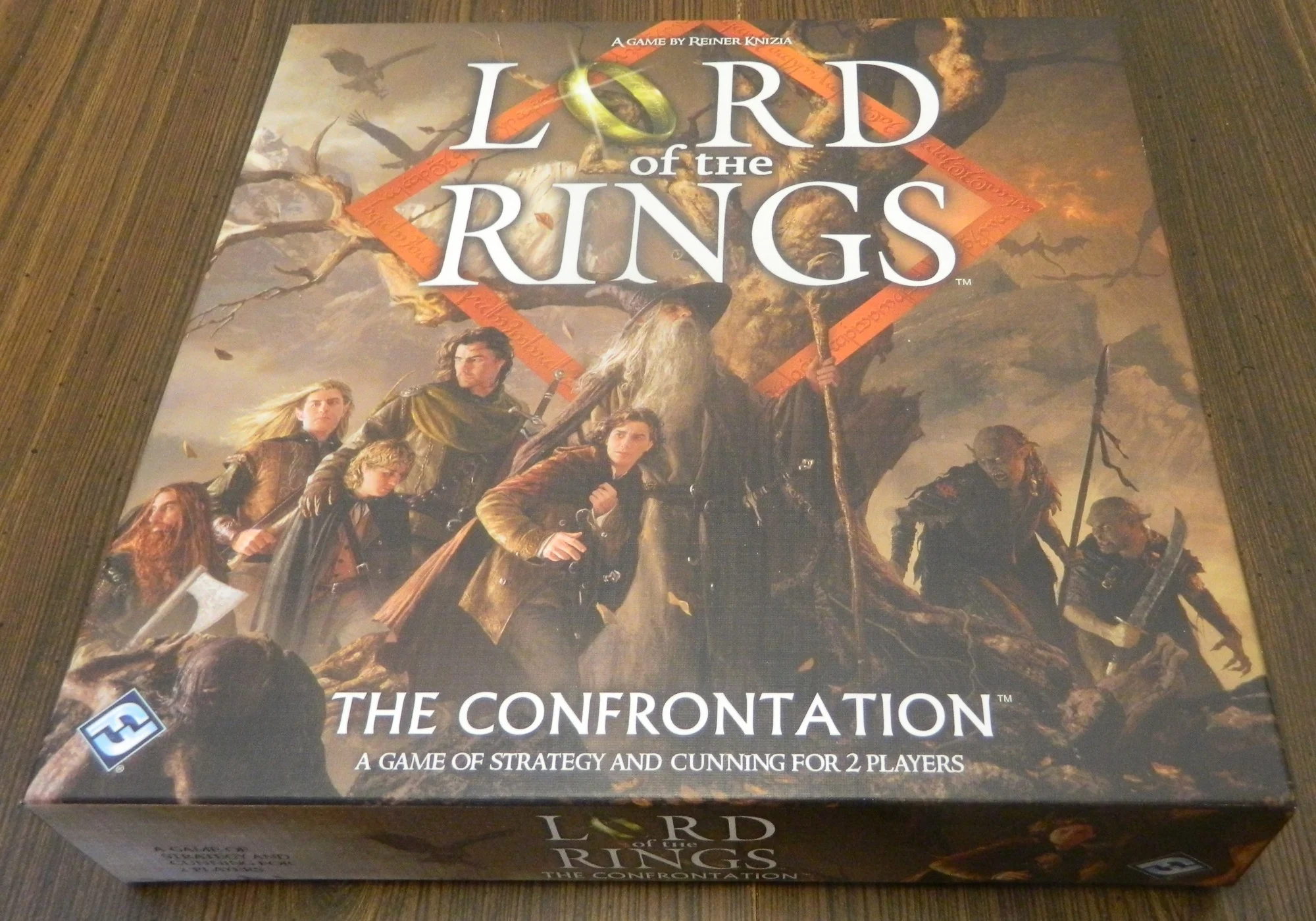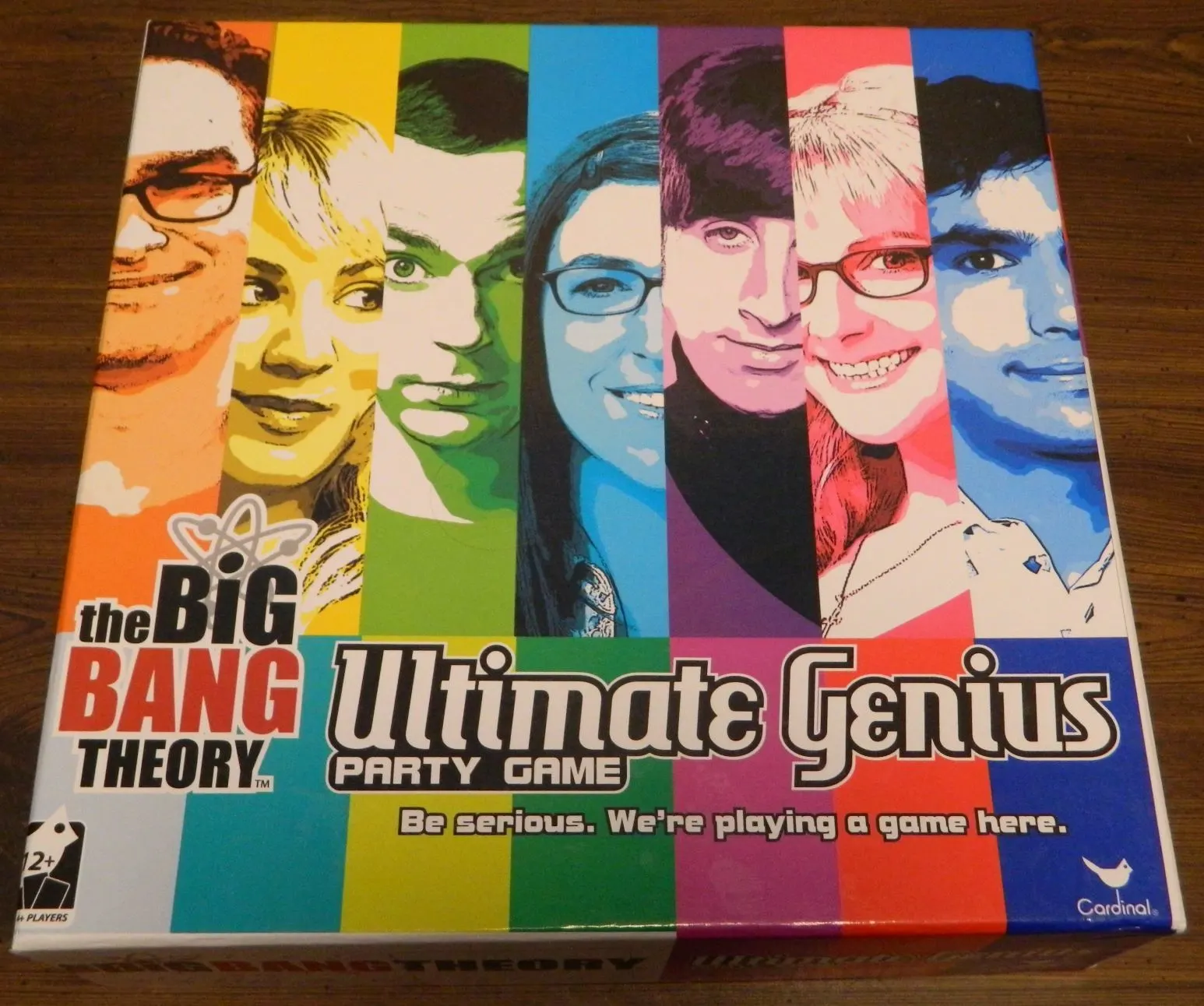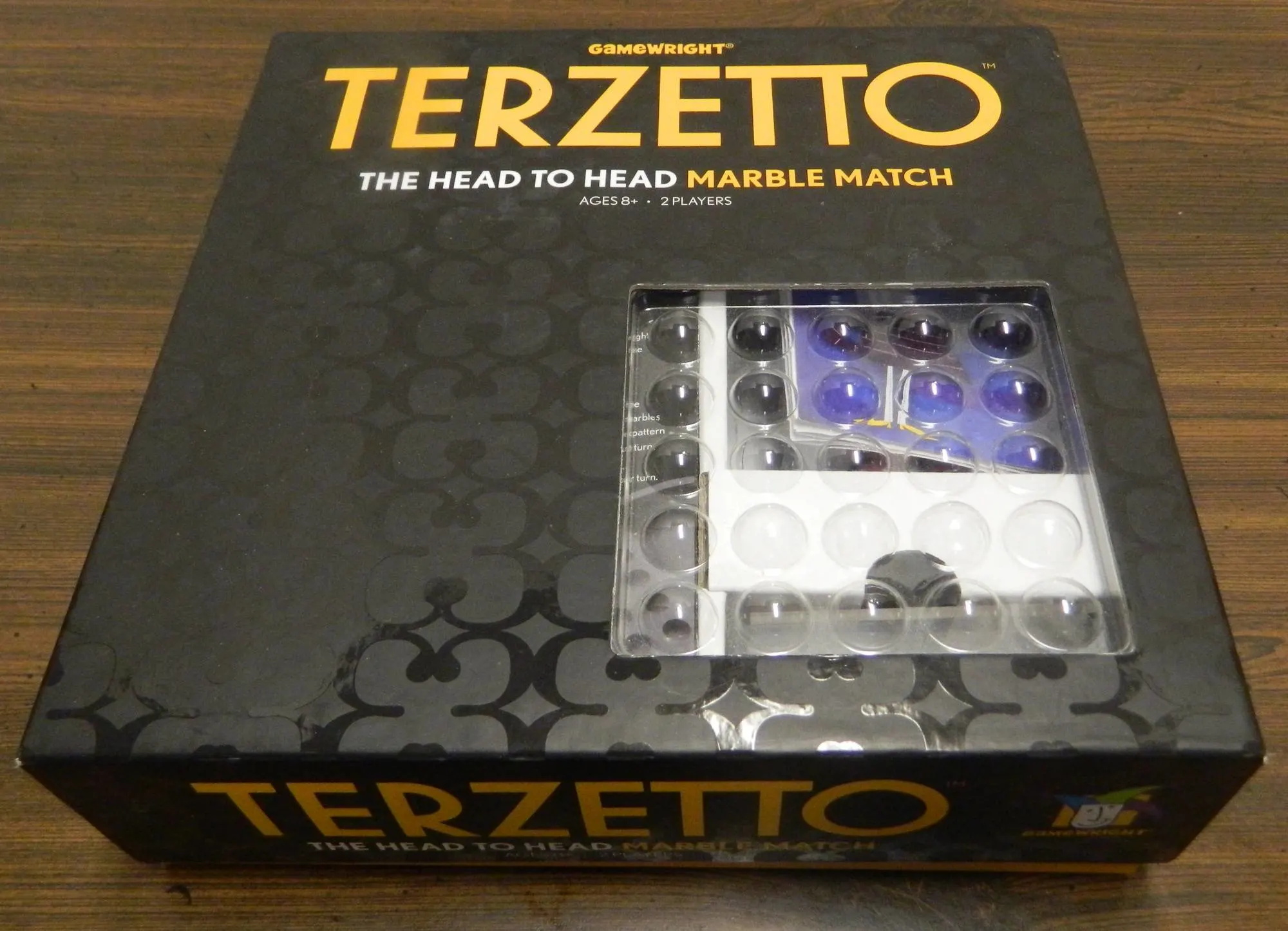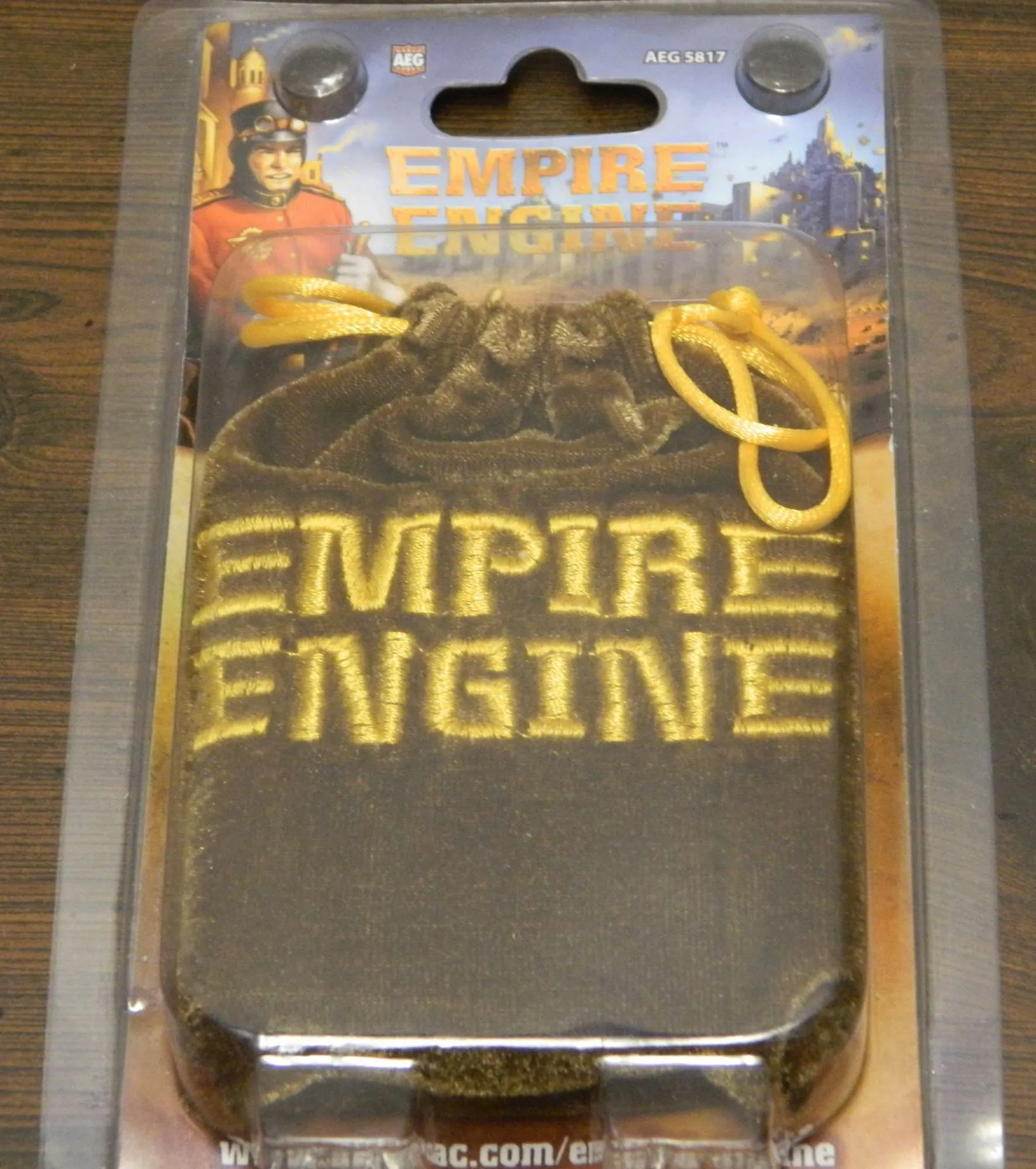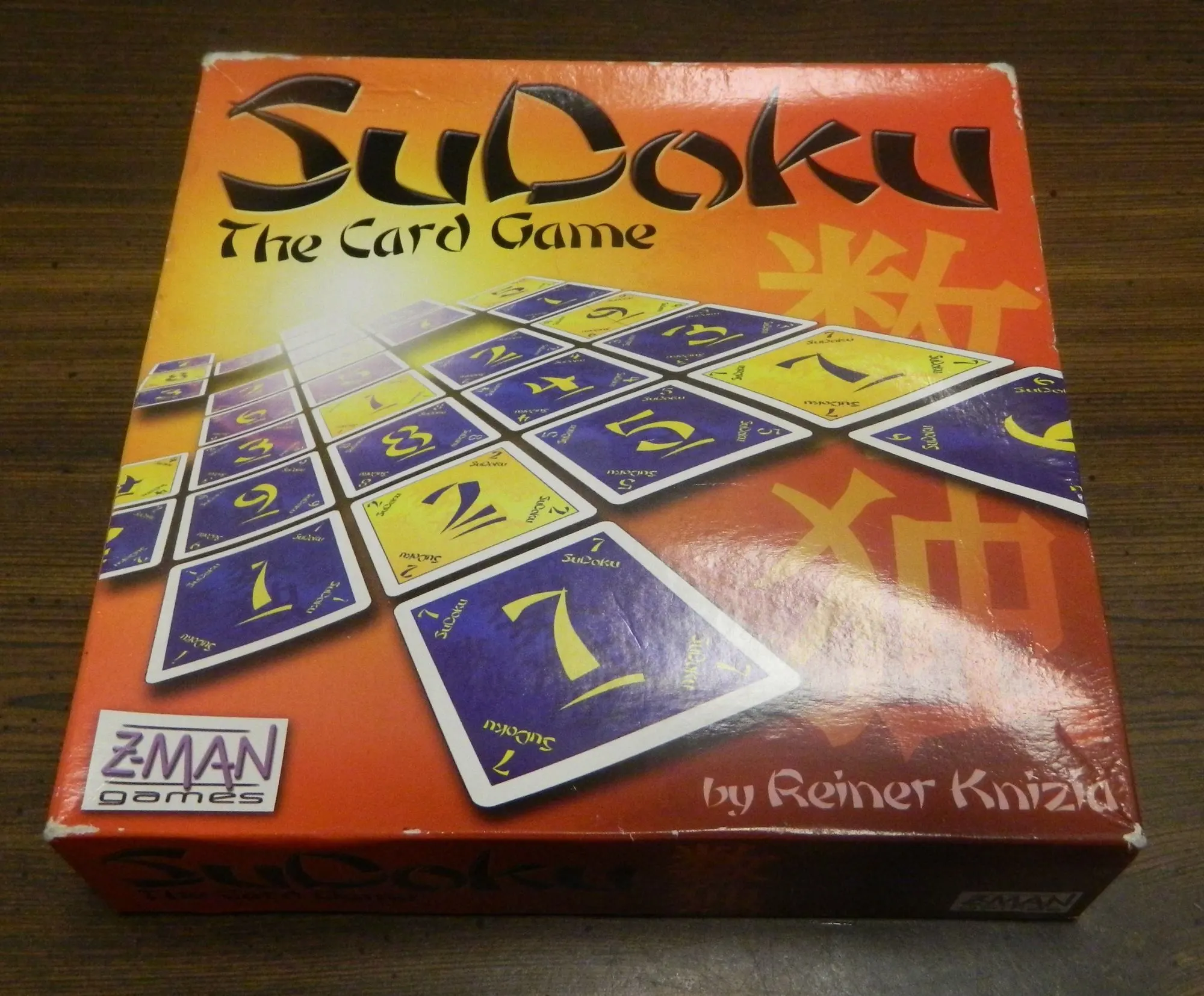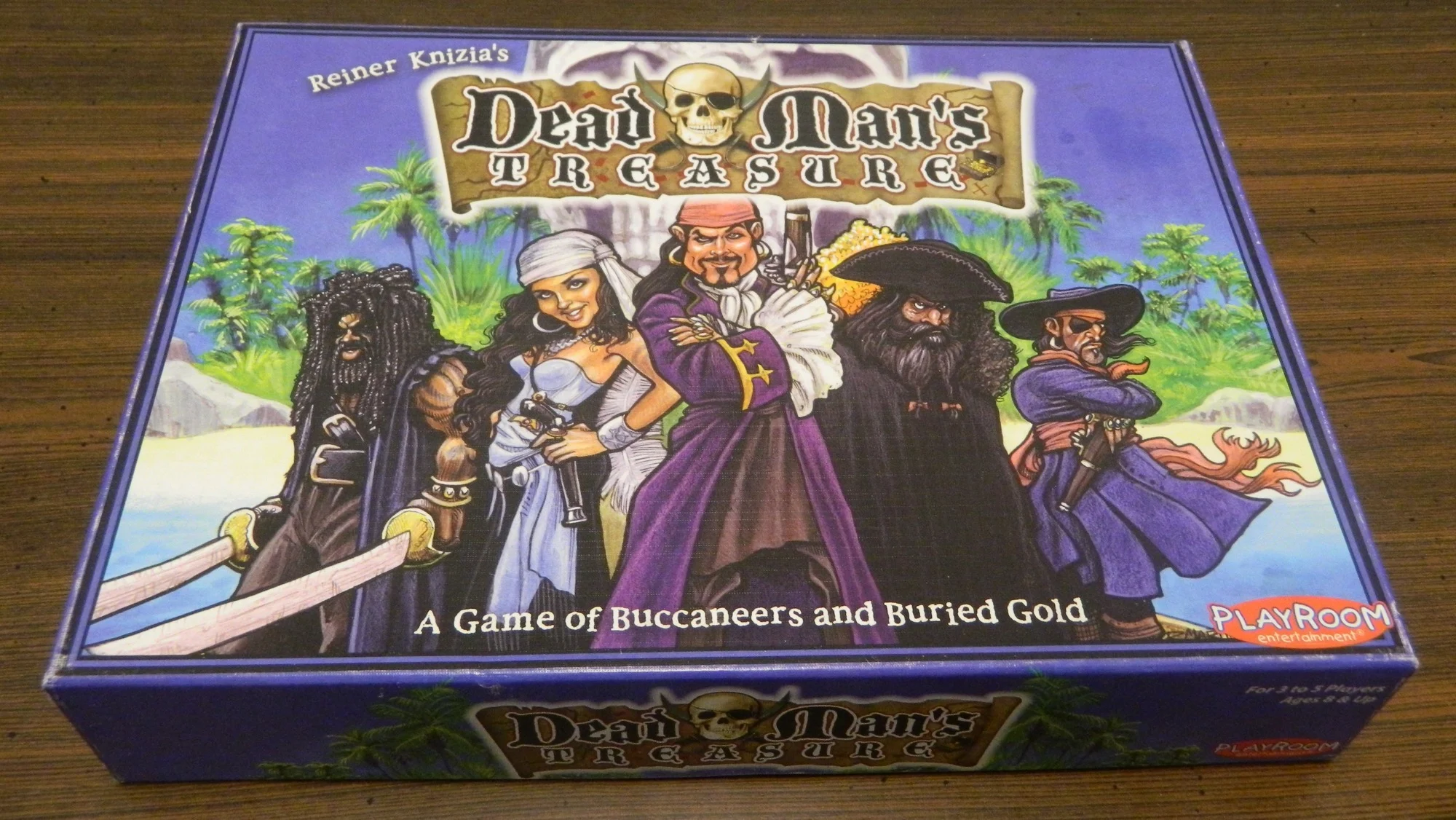How to Play
To begin the game the players need to decide whether they are playing the classic game or the variant game. If the players are playing the classic game they will use the character tiles and cards with the ring symbol and if they are playing the variant game they use cards and tiles with the star symbol. The appropriate character tiles are slid into their stands and each player takes their character and battle cards. Each player takes a reference sheet to know the other players’ abilities.
The player playing as the Fellowship places four of their characters in the shire and one character in each of the following locations: Arthedain, Cardolan, Enedwaith, Eregion, and Rhudaur. The player playing as Sauron places four characters in Morodor and one in each of the following locations: Gondor, Dagorlad, Fangorn, Mirkwood, and Rohan. The character pieces are placed so that only the player who controls them is allowed to see them.
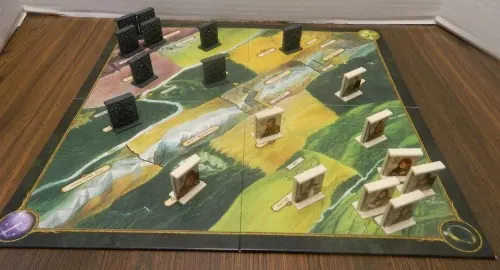
The player controlling Sauron gets to play first.
Movement
During a player’s turn they must move one of their character pieces forward one space. Movement must follow these rules:
- Pieces can not move sideways or backwards unless a card states otherwise.
- If a character is in a mountain region a piece can never be moved sideways even if a card states otherwise.
- Players cannot move a piece into a region that has already reached its’ character limit indicated by the small circles in the region on the gameboard. The Shire and Mordor can hold four characters, the mountains can hold one, and all of the other spaces can hold two.
- Only the Fellowship player can use the River Anduin and Tunnel of Moria special arrows . These special movements only apply in the direction the arrow is pointing and do not apply in the opposite direction. These movements count as normal “forward” movements. If a player uses the Tunnel of Moria and there is a Sauron character in Caradhras, the Fellowship character does not fight the Sauron character.
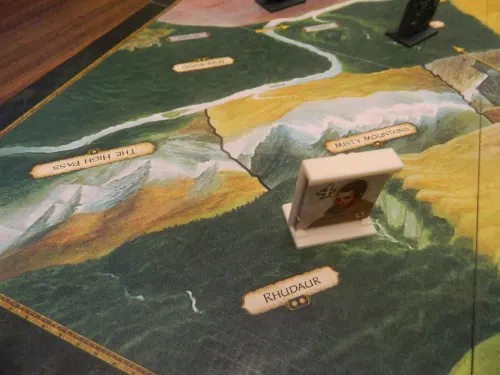
Combat
When a character moves into a space that is occupied by a character of the opposing faction, a battle ensues. The player who moved into the space is the attacker while the other player is the defender. If there are two or more characters in the region being attacked, the attacking player gets to choose which enemy to attack. If an opponent’s character is not hidden the player can choose to fight that character or they can randomly select one of the unrevealed characters. Combat follows four steps.
#1 Reveal Characters
Both players reveal the character that is in the battle.
#2 Resolve Character Abilities
Every character has a special ability in the game which may affect the battle. The Fellowship player gets to use their special ability first if applicable, followed by the Sauron player. If the special ability of the Fellowship character ends the battle, the Sauron character is unable to play any cards or use their character’s ability to alter the battle. If the Sauron character in battle is the Warg the Fellowship character’s special ability is not read.
Some of the Fellowship characters have the ability to retreat. If the Fellowship player wants to retreat they need to retreat before the Sauron player deals with their character ability (except for the Warg which will stop the Fellowship player from retreating). If they decide to retreat the Fellowship player follows the retreat rule (backwards or sideways). If by retreating the player would either move into another area occupied by Sauron, would enter an area where the maximum number of characters are already present, the player would move sideways through the mountains, or backwards through the Tunnel of Moria; they are not allowed to retreat.
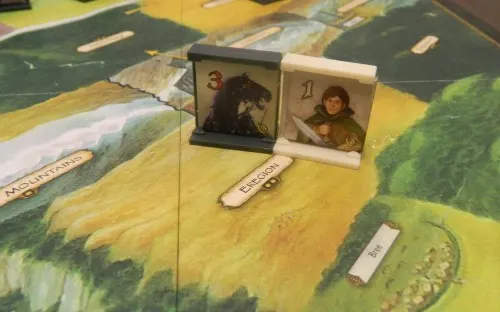
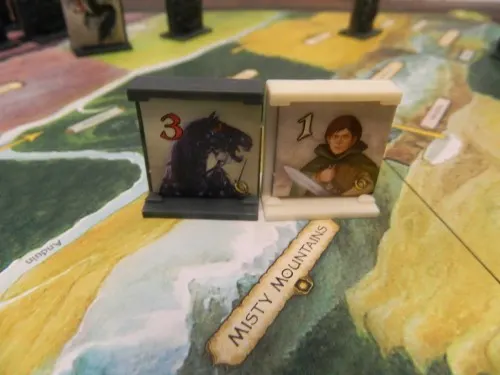
#3 Play Cards
Once both players have dealt with their character abilities and both players still have a character in the battle, the battle proceeds to the card phase. Both players must select one card from their battle deck to play. Cards come in two varieties: text and strength. Text cards are applied first. If both players reveal a text card, the Sauron player gets to use their card first even if it ends the battle. Players apply the actions of the text cards and if the battle has not ended, play proceeds to step four.
#4 Determine Victor
If the battle is not ended based on a text card, the strength cards are settled. Strength cards add the number printed on them to the battle strength of each players’ character. The combination of the number on the character’s card and a strength card (if played) is the character’s total strength. Both players compare their strength and whichever character is stronger wins the battle and the other character is killed and removed from the game. If both characters are the same strength, both characters are killed and removed from the game.
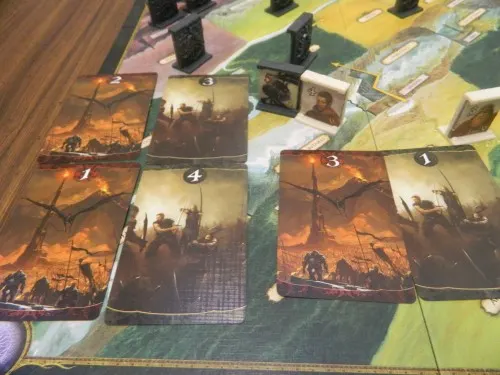
The battle cards used in the battle are discarded and will not be able to be used again unless all battle cards have been used and both players pick up all of their cards again. If the attacker is the victor and there is another opponent on the space, the attacking character begins a new battle with that character. After all battles have been completed, all surviving character tiles are turned around (hidden) so the other player can no longer see which character it is. Whenever a player has two characters on the same space they are able to take both pieces and mix them up behind their back so the other player cannot be sure which character is which.
How to Win
Lord of the Rings Confrontation has three winning conditions.
- The Fellowship wins if they get Frodo into Mordor. Frodo can move into Mordor even if Sauron has characters in it without having to fight them.
- Sauron wins if the player either gets three of their characters into the Shire or if they kill Frodo.
- If a player is unable to make a valid move during their turn, they lose.
To get the full experience it is recommended that each player plays a game as both factions. To determine the ultimate winner, the winner of each game gets one point for each character they have remaining. The loser of a game gets zero points. Whoever has the most points after both games is the winner.
The Variant and Draft Game
The game includes two additional versions of the game.
In the variant game the players use the character cards and tiles with the star printed on them. The game is played the same as the original game but includes different characters and abilities. The variant game also has the following rule differences:
- Sauron can win automatically if the Witch-King enters the Shire. Just like Frodo in the normal game he ignores any characters in the Shire when he enters the space.
- If Frodo is killed, Sam becomes the new ring-bearer if he is still alive. Sam does not need to be in the same space as Frodo when he is killed to become the new ring-bearer. The Fellowship player must reveal Sam’s location to the Sauron player though. If Sam is already dead or is killed after taking the ring, the Sauron player wins the game.
In the draft game, players can choose characters from both the original and variant games.
My Thoughts
(This review is based off the 2013 “Deluxe” edition of the game).
Back during last year’s Fantasy Flight Games warehouse sale I ended up picking up quite a few games. One of the games that really stood out to me was Lord of the Rings The Confrontation. Being a pretty big Lord of the Rings fans I was intrigued by the theme. Add in the fact that the game was created by Reiner Knizia who I have enjoyed quite a few games from and I was quite excited to play the game. While Lord of the Rings The Confrontation is not a perfect game, it is a very good game.
The best way to describe Lord of the Rings The Confrontation is to compare it to the classic game Stratego. For those unfamiliar with Stratego, two players face off against each others army. Each player has 30-40 different soldier pieces (depending on which edition is played) which each player secretly arranges on their side of the board. Both players then move their pieces forward attacking the other player’s pieces. Generally the higher ranked soldier wins each battle (except in the case of bombs). The two players would continue to attack one another until someone captured the other players flag which would win them the game.
I mention Stratego because Lord of the Rings The Confrontation took quite a bit of inspiration from Stratego. The basics of the game are the same. Each player has an army arranged in a way that the other player is unaware of. Players move their pieces and engage in battles where usually stronger character wins the battle.
While it borrows its’ base gameplay from Stratego, Lord of the Rings The Confrontation does add a lot to the formula as well.
First battles are not as clear cut like they are in Stratego since there is a bluffing mechanic to the game. The stronger character will not always win every battle. Cards can either outright kill the other character or they could make a weaker character defeat a stronger character. I call this a bluffing mechanic since you need to guess what the other player is going to do. Almost every card has a card that will work well against it. For example you might want to play your highest strength card but the other player may play a card that negates your strength card.
Second each character has its’ own unique mechanics. In Stratego the pieces pretty much boiled down to their strength if they weren’t the bomb or flag. In Confrontation each character has its’ own strengths and weaknesses. Some characters are strong but aren’t able to benefit from cards played (Cave Troll) while others can sacrifice themselves to kill their opponent (Boromir). Since Confrontation has a lot fewer pieces for each faction you need to be more careful with each piece. You need to try and use each piece to maximize it’s strength while minimizing its’ weaknesses. Each character’s special ability is beneficial in the right scenario and they are varied enough that they keep the game interesting.
Third the winning conditions are different. In Stratego you just needed to find the enemies’ flag holder to win the game. This could happen really early or very late in the game. You essentially just need to guess where the other player placed their flag. In Confrontation you win by either moving your pieces across the board or by trapping your opponent so they are unable to move. This requires you to end up fighting most of the other player’s characters which adds quite a bit of suspense especially when one of the players have to randomly pick from one of two characters hoping to pick the right character. This leads to exciting endings to the game. In the two games I played both sides were reduced to their last two or three characters before the game ended. After both games were played I ended up winning because I won with two characters remaining while my opponent won his game with one character remaining.
While Lord of the Rings The Confrontation is similar to Stratego, I think it improves the game significantly. I always liked Stratego as a child but I liked Confrontation more since it is a more strategic game. There is a lot more choices to be made in Confrontation. You need to try and use each character to their max benefit. You can’t just throw away your troops since losing one piece at the wrong time could lose you the game.
Being a game of the moderate difficulty level, Lord of the Rings The Confrontation takes a while to learn. The game is not hard to comprehend but it takes a while to adjust to playing and knowing what you are supposed to do. It will take you a couple games in order to form a good strategy and you might need to rely more on luck during your first couple of games. Your first couple of games may take longer than you expect as well. The two games I played probably took 30-45 minutes each since neither player had played the game before. I see the length of the game dropping considerably once both players are familiar with the game.
One of the only issues I had with Lord of the Rings The Confrontation was that despite quite a bit of strategy in the game, luck will generally have some impact on the ultimate winner. Since there is really no way to tell where your opponent is going to place their different characters, you kind of need to get lucky and attack with the right characters in the right situations. The Fellowship in particular have a lot of characters that automatically kill another character. If the Fellowship player takes advantage of one of these situations they are likely to win the game. Luck also comes into play when playing cards since you can only guess at what the other player is going to play. If one player is better at guessing what cards the other player is going to play, they have a good chance at winning the game.
Overall I found the theme to be good. The theme doesn’t have a huge impact on gameplay itself but it is felt within the game. For example the characters special abilities seem to be at least somewhat crafted based on the characters themselves. The artwork is also great and gives you a strong feeling that you are in Middle Earth.
The theme did fail in one instance though. In the game where I was playing as Sauron I was about to win. I had my Warg in between Frodo and Mordor. This Warg would have prevented Frodo from retreating which meant that I would likely have been able to kill him winning the game. It just so happens that the only card I had remaining at that moment though was the retreat card. So in a situation where I would have likely won the battle, I was forced to retreat since that was the only card I could play. Since I lost this chance to kill Frodo I ended up losing the game since Frodo was able to sneak around my other troops. This scenario kind of broke the theme in my opinion since this would never have actually happened in the Lord of the Rings universe.
Over on Board Game Geek there seems to be a debate over which faction is stronger. Overall I would say that both factions are pretty even.
Just looking at the characters you would assume that Sauron would be better since most of the characters are stronger and the Sauron player gets more powerful strength cards. At least in the two games I played, Sauron’s forces got off to strong starts. Their stronger characters do a good job beating the weaker Fellowship characters. The problem with Sauron’s forces is that they don’t have a whole lot of flexibility with regards to movement. The Flying Nazgul has the most flexibility of movement in the entire game but the Fellowship player can pretty easily restrict its’ movement and it can be automatically killed by Legolas. I would consider the Sauron faction to be the brawn faction.
The other thing that weakens Sauron is that I think it is harder for Sauron to reach the winning conditions. You would think it would be easy to kill Frodo but it isn’t. Due to Frodo’s ability to retreat any time he is attacked, it is very hard to actually kill him. The other player is obviously not going to attack with him since he is very likely to lose. The only way to kill him is to either use the Warg so he can’t retreat or get him into a situation where he can’t retreat. The other way Sauron can win is by getting three characters into the Shire. At least based on the games I played this is not very likely since both players will generally have a similar number of characters at a given time and the Sauron player needs to keep characters back to prevent Frodo from sneaking into Mordor.
While weaker in terms of strength, the Fellowship is much more mobile which helps a lot in the game. The Fellowship is unlikely to win many straight up fights so it needs to use its’ special abilities and mobility to beat Sauron. This mobility comes from several sources. The Fellowship has two characters that can retreat from battles that they are going to lose. They also have the Tunnel or Moria to skip a space and they have the river spaces near Mordor in order to move sideways and sneak around the Sauron characters. For the most part the Fellowship has a lot more flexibility to move their characters around to sneak into Mordor.
The Fellowship also have a lot of opportunities to destroy stronger characters than themselves. For example Boromir kills anyone he faces no matter their strength. If you are lucky you could use him to take out one of the strongest Sauron characters. Gimli also automatically kills the orcs, Merry automatically kills the Witch-King, and the fellowship has a battle card that wipes out both characters. The Fellowship doesn’t have a lot of strength but with a little luck and good use of cards they could easily take down a lot of the stronger Mordor characters.
While I think both factions are pretty even, the strength of both sides is also kind of a moot point since you generally want to play the game with both players playing each side once. In this case both players get to be both factions so neither player gets an advantage. Whoever plays both factions the best will win the game. In the games I played the Fellowship won both times.
While I didn’t play the alternate or draft games I think both will add quite a bit to the replay value to the game. Looking at the cards I think the alternative game kind of flips the two factions. The Sauron player gets more flexibility while the Fellowship player gets stronger characters. The character abilities also seem to vary quite a bit as well. Using these alternative cards should change the gameplay experience. I think the draft game would be even more interesting since you could create some unique combinations between the characters from the two different games.
Being a Fantasy Flight Games board game it is not surprising that the components are very good. Supposedly the “deluxe” edition I bought is considerably bigger than the original version of the game so for space conscious people that may be an issue. Overall I found the artwork to be great. The game does follow the books instead of the movies so the characters are going to look different than their movie counterparts which was confusing at first since I am more familiar with the films than with the books. In addition to the nice artwork, the components are very nice which is what you normally expect from Fantasy Flight.
Final Verdict
Being a Lord of the Rings game, Lord of the Rings The Confrontation could have been an easy cash in on the franchise. They could have just tacked the theme on another game and made a lot of money from Lord of the Rings fans. While the game does borrow quite a bit from Stratego, it actually adds quite a bit to the game and improves it. The game does still rely quite a bit on luck with regards to guessing where your opponent has placed various characters, but it has a lot of strategy as well.
If you’re not a Lord of the Rings fan you probably think there is no reason to pick up Confrontation. While you won’t enjoy the game as much as a Lord of the Rings fan, you can still enjoy the game. The theme helps the game but even without the theme it would still be a good game. If you like Stratego or the gameplay section intrigued you, I think you will like Confrontation. If you like Lord of the Rings and don’t hate Stratego I can’t imagine you not enjoying Confrontation. If you don’t like Stratego though you may not like Confrontation even if you are a fan of Lord of the Rings.

